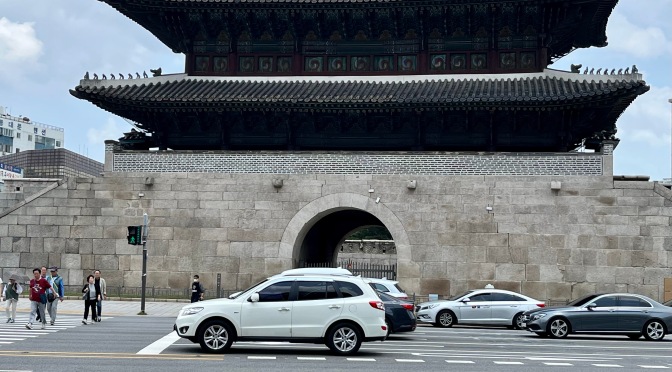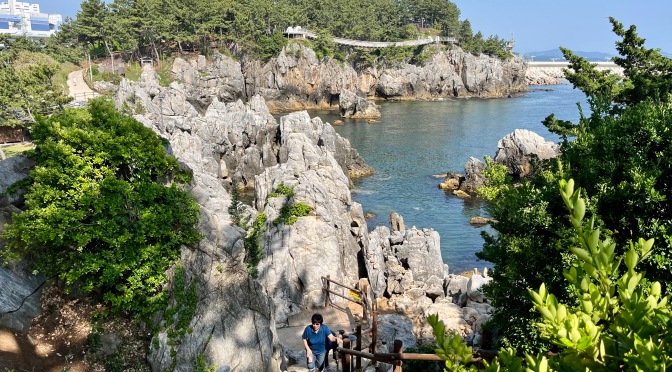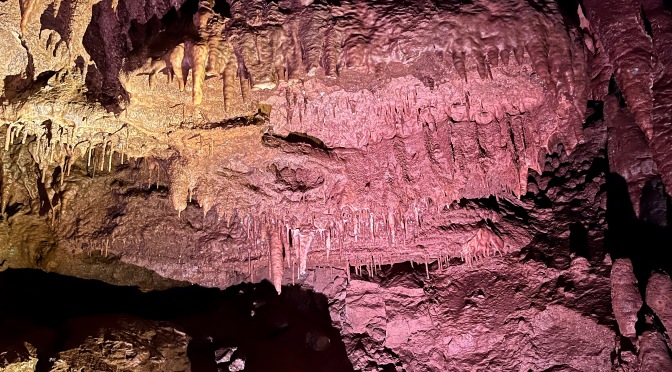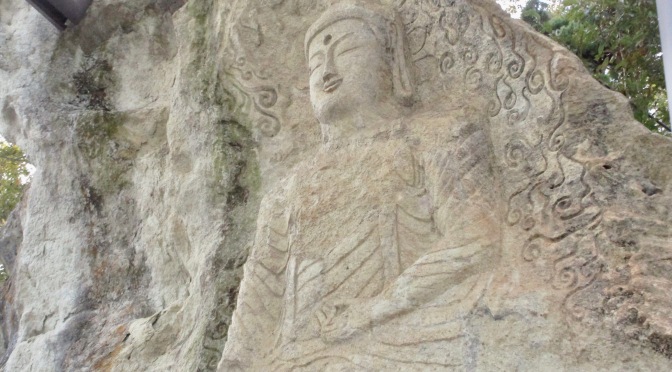I had usually travelled by train during past trips to Korea, but on my last east coast endeavour I switched to buses. Each trip, I arrived at an intercity bus terminal and bought a ticket on the next bus, never booking ahead and there were always empty seats. Buses left on time, and it made travelling up the peninsula easy. In Ulsan I bought a city bus card thinking I’d probably have to do the same at each place I stopped if I wanted to use the local city transport, but that card was transferrable to all the places I visited along the east coast and even in Seoul. I also liked how twice, bus drivers told passengers to be quiet if they were talking too loud. It made every journey peaceful EXCEPT
Continue reading Korean ReflectionsTag Archives: South Korea
Sokcho
Exploring Sokcho’s beaches and around Cheongchoho Lake was a breeze after two days climbing in Seoraksan National Park. Sokcho Beach had a great expanse of sand and a pine forest on its southern side, but it was still a city beach with tourist trappings.
Continue reading SokchoGyeongpo Provincial Park and beyond
On my last full day in Gangneung I shouldn’t have been fooled by the words—provincial park, but I was lured by the prospect of finding trails through woods. Instead, there were lines of hotels and a busy road streaming along the coastline.
Continue reading Gyeongpo Provincial Park and beyondThe woman on Korean money
Not far north from Donghae was Gangneung where I intended visiting the Shin Saimdang Museum located on the grounds of her birthplace. It was stated at the entrance that for the first time in the world both mother and son appeared on a national currency—she on the 50 000 won note and her son, Yulgok on the 5 000 won note. At the entrance, I was informed that the museum was closed for a month preparing for a special event.
Continue reading The woman on Korean moneyChuam Chotdaebawi
Nine kilometres south of Donghae was Chuam Chotdaebawi. A string of tourist stores lined the entrance to sandy Chuam Beach on one side and Chuam Chotdaebawi on the other. The sign at the entrance claimed the site had the only maritime suspension bridge in Korea but obviously the sign was old since Daewangam Park also had a suspension bridge stretching above the East Sea.
Continue reading Chuam ChotdaebawiCoastal Donghae
After several hours travelling up the east coast from Pohang, I arrived in Hongdae. I had come here especially to see Chongok Golden Bat Cave. A recording of bat noises greeted me as I descended the steps into the cave, but past the entrance there was only the sound of running water and the awe of others walking along the cave route.
Continue reading Coastal DonghaePohang’s Homi Peninsula Coastal Trail
Homi Peninsula Coastal Trail extended for over twenty-four kilometres around Pohang’s peninsula. It was part of the larger coastal trail that ran from Busan in the south to the DMZ in the north. I began my hike past Irwoldong having let the blue bus pass that would have led me to the real starting point because I’d been confused by the destination sign that had only been in Korean calligraphy.
Continue reading Pohang’s Homi Peninsula Coastal TrailGolguram Hermitage
Golguram Hermitage was not far from Gyeongju’s east coast. Next to the hermitage was a cliff containing grottos, but the main feature was a stone-carved seated Buddha. Steps led to small caves where other statues were contained before I finally reached the four-metre-high Buddha. It was believed that the Silla Buddha image was carved between the 7th-9th century and originally there had been twelve caves.
Continue reading Golguram HermitageFrom GyoChon Hanok Village to a restored bridge
This village was a vast network of traditional houses. Many had been turned into cafes and tourist shops, but when I walked some of the back streets there was a sense of the old.
Continue reading From GyoChon Hanok Village to a restored bridgeGyeongju Palaces
Wolseong Palace site was located on the highest point within Gyeongju City. The Namcheon River formed a natural barrier on one side and wide ditches were dug to the north, east and west to prevent invasion. King Pasa, the fifth king of the Silla Dynasty moved the capital there and built a castle in 101 AD. It served as the dynasty’s central palace until its fall in 935 AD. Near the remains of the palace site was Donggung Palace, several temples, Cheomseongdae observatory and many large royal tombs.
Continue reading Gyeongju Palaces









